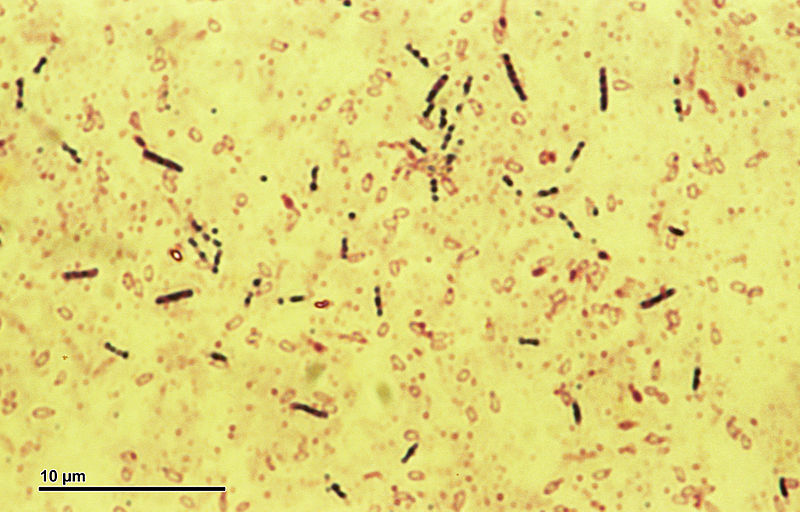Allele vs. Predator
Minor gene changes have major consequences for an ecosystem
Greg Uyeno • January 23, 2016

Changes in a single gene of B. subtilis severely disrupted the makeup of its microbial community. [Image credit: Josef Reischig | CC-BY-SA-3.0 ]
Nothing disrupts the intricate clockwork of an ecosystem like the disappearance of the apex predator, the one at the top of the food chain. Nothing, perhaps, except the regulation of a single gene.
A joint Irish-Scottish research team recently demonstrated that deleting a single gene in a species can affect the composition of their community just as much as removing the top predator. The researchers accomplished the feat in a laboratory by manipulating a microbial community of organisms invisible to the naked eye.
That’s a long way from duplicating what happens in a forest ecosystem, or even inside your intestinal tract. Even so, the authors think that their findings, published in Nature Communications in September 2015, may have important implications in natural communities.
The results were “striking,” says one of the paper’s co-authors, Luke McNally, a microbiologist at the University of Edinburgh. “We really couldn’t have predicted the changes in our community, and we still don’t understand the changes that occurred.”
The findings are surprising given a pair of commonly held views. Large effects from just a single gene change are unexpected because so many different genes contribute to an organism. And top predators fill an ecological niche that is hard to replace, so their extinctions have a big impact on the communities they leave behind.
“We know that in many systems, when you remove the apex predator, that effect can cascade all the way through other levels of the food web, causing secondary extinctions,” says Diane Srivastava, an ecologist at the University of British Columbia, who was not involved in the study.
The new experiment, though, suggests that even changes as subtle as the alteration of a single gene in a species much lower on the food chain can ripple through an entire ecosystem — at least, they can if that system consists only of microbes.
The researchers took a bacterium, Bacillus subtilis, and manipulated the genes that help to form a slime in which the microbes live. Anticipating the importance of this slime to the microbial community, the team conducted separate trials for two genes associated with slime formation. The researchers then tested the impact of completely removing the slime-building bacteria, and also of removing several top-of-the-food-chain predators — scenarios mimicking species extinctions. Editing the slime genes caused more community disruption than removing B. subtilis entirely and was comparable to getting rid of the apex predator species.
“We were trying to use extinction as a benchmark against which to evaluate the effects of these genetic changes,” says McNally.
One might wonder if single-gene edits, even those meticulously engineered to a specific purpose, could have the same impact in other communities. The study’s model microbial community had only eight different species. The human gut has thousands.
But microcosm experiments like this one, at least the well-designed ones, demonstrate ecological principles that should apply to larger systems. In this case, that principle may not be the importance of single genes, but rather the traits to which they contribute. “[The study] shows that genes are incredibly important in determining community structure and functioning because they change the traits of species,” says Srivastava.
It’s a message that “ecologists need to take very seriously,” says Aabir Banerji, an ecologist at Rutgers University. “We cannot disregard species’ traits and expect to make accurate predictions about how things like soil water contamination and misuse of pesticides will affect communities over time.”
Dreams of applying the research to something like a bacterial treatment for the human microbiome will have to wait. And it’s not just the step up in complexity. Purpose-engineered bacteria would need to survive amidst natural competitors to have any effect. “It would be surprising if we engineered a mutant that had higher fitness,” says Srivastava. “It’s always possible, but it would be surprising.”
McNally sees promise in further research into the effect of these changes on evolution, as well as the possibility of using genetic engineering to influence natural communities. “Everything in the field is showing such potential,” he says, “but because community ecology is so complicated, we need to run tests to make sure we don’t cause any unwanted effects.”